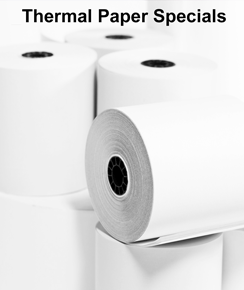Plotter Paper Size Chart & Roll Sizes [Ultimate Guide]
In our world, where so many companies are engaged in technical work, plotter paper has become an important purchase and a handy invention. Plotter paper is essential to create premium quality blueprints, charts, and other images and possesses the unique ability to produce precise and clear images for large displays.
However, before one can purchase plotter paper for inkjet printers, it is important to understand the plotter paper specifications one requires, especially in terms of its size. The plotter paper sizes, in turn, depend on the printer or copier that it will be used with. However, you can find below, a quick plotter printer paper size chart along with roll sizes.
The plotter printer paper chart will help in mapping your needs onto the available sizes in the chart and determine the plotter printer paper and roll size that you require to achieve desired results. In addition to picking out the right size, you also have to pay heed to the quality of the paper. After all, a low-quality paper will not produce high-quality images as intended.
Up next, is your easy-to-grasp guide on choosing the right plotter paper for your business.
Understanding Plotter Paper Specifications
- Roll Width
When it comes to specifications, roll width and length are usually the first ones on the list. In the United States, the roll width is measured in inches. The most popular roll widths for wide-format plotters include 11, 17, 18, 22, 24, 30, 34, 36, and 42 inches.
These width sizes come with an added advantage, they allow for a lower total cost of printing for printing large numbers of standard-sized architecture paper or engineering documents. But in order to benefit from this, make sure you know the size of the documents you will be printing before you choose the roll width. Additionally, you also need to ensure that your printer also allows printing for your chosen roll width.
- Roll Length
The length of plotter paper rolls is usually expressed in feet and is most commonly sold in sizes of 150, 300, and 500 feet which have the compounded benefit of allowing the printing of multiple copies of the same size of images/documents.
However, if you need to print a special document or image and need thicker paper, you will have to opt for clear films in lengths of 100 ft or 150 ft.
Buying rolls in these lengths let you print multiple copies without having to stop and reload the paper. This, in turn, translates into business efficiency, saving you time and you know what they say about time - time is money.
- Caliper:
The thickness of the paper is measured in one-thousandth of an inch and expressed in millimeters. The thickness of paper that you require will vary with the kind of printer that you’re using. For example, older models of inkjet printers were used to print on bond paper and clear films, hence, requiring a thickness of less than 9 mils. However, on the other hand, newer versions of these printers were wide form and designed to handle wider ranges of bond papers, photo papers, canvas, and other materials, spanning a thickness of more than 9 mils.
So the thickness of the plotter paper that you need boils down to your printer options. If you would like to print on a thicker plotter paper, you will have to opt for wide inkjet printers.
- The Core Diameter
The core diameter is the size of the cardboard tube on which the plotter paper is rolled and is sometimes called the core size. Usually, the rolls of plotter papers for inkjet printers come in sizes of 2 inches (core diameter) to fit a variety of different printers.
However, for xerographic copiers, the rolls come in sizes of 3 inches. Hence, before you choose the core diameter of your plotter paper, you should know the core diameter that your printer can handle.
Knowing your printer capabilities is key to choosing the paper roll size and core diameter.
Standard sizes for U.S. Architectural Drawings are:
ARCH A: 9 x 12 inches
ARCH B: 12 x 18 inches
ARCH C: 18 x 24 inches
ARCH D: 24 x 36 inches
ARCH E: 36 x 48 inches
Standard sizes for U.S. Engineering Drawings are:
ANSI A: 8.5 x 11 inches
ANSI B: 11 x 17 inches
ANSI C: 17 x 22 inches
ANSI D: 22 x 34 inches
ANSI E: 34 x 44 inches
ISO (International Standards Organization) Drawing Sheet Sizes are:
A0: 33.11 x 46.81 inches (841 x 1189 millimeters)
A1: 23.39 x 33.11 inches (594 x 841 millimeters)
A2: 16.54 x 22.23 inches (420 x 495 millimeters)
A3: 11.69 x 16.54 inches (297 x 420 millimeters)
A4: 8.27 x 11.69 inches (210 x 297 millimeters)
US Letter Sizes
A: 8.5 x 11 inches
B: 11 x 17 inches
C: 17 x 22 inches
D: 22 x 34 inches
E: 34 x 44 inches
F: 28 x 40 inches



